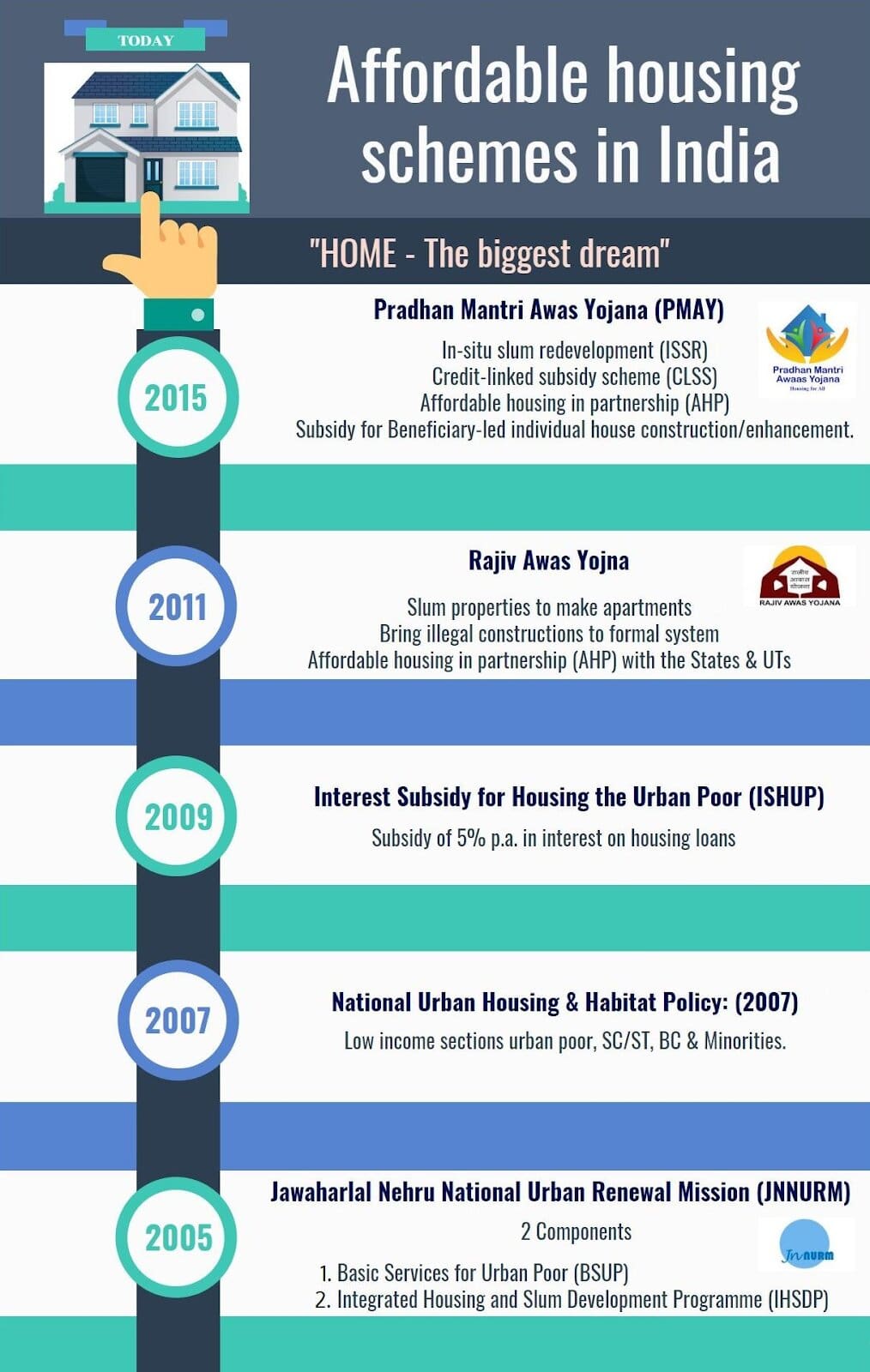The Plight of Slums | 09 Oct 2020
The article is based on ‘Affordable housing is the solution to urban inequality, exclusion’ which was published in the ‘Hindustan Times’ on 30/09/2020. It focuses upon the Supreme Court’s ruling on slums in Delhi, their existing condition and the way forward towards affordable housing.
Millions from lower-income groups from rural areas throng cities every year for a secure livelihood. A majority of which is hardly able to earn enough to eek out a decent standard of living at urban exorbitant rates.
Hence, many are forced to put up in slums and shanties of ‘jhuggi jhopdi clusters’. Apart from being unhygienic, these are also mostly far from workplaces and away from affordable commute options.
In this context the Supreme Court has ordered forced eviction of many households settled around the railway land in Delhi.The court has tasked the railways, the Delhi government and the central government to instead come up with a comprehensive housing plan for these households.
This case highlights the plights of slum dwellers in India and in interest of Human rights the related challenges must be addressed at the earliest..
The Current Issue
- The Supreme Court has ordered the removal of about 48,000 slum dwellings situated along railway tracks in Delhi within three months, and to ensure compliance of its order, it has stopped any court from passing an order of stay against such removal.
- The action was taken after the failed attempt of the Special Task Force to remove these Jhuggies as they were present within the security zone of the Railways.
- Although these Bastis (slums) cover less than 0.6% of total land area, and 3.4% of residential land in the 2021 Delhi Master Plan, they support possibly upto 30% of the city’s population.
Slums
Slums: Highly populated urban residential areas consisting mostly of closely packed, decrepit housing units in a situation of deteriorated or incomplete infrastructure, inhabited primarily by impoverished persons.
The Sorry Condition of Slums
- More than 1 billion people live in slums and informal settlements globally.
- As much as 50-80% of employment is informal in developing cities, from street vendors to minibus drivers to migrant workers.
- Many of these families are surviving day-to-day lives by living in dense neighborhoods with unreliable and often shared access to basic services like water, sanitation and electricity.
In India
- Between 152-216 million (17.4% of urban households) people in India live in dense informal housing, or slums.
- World Resources Institute (WRI)'s World Resources Report documented how one slum in Bangalore is 12 times denser than the city average, housing 140,000 people per square kilometer.
- In 2018, only 60% residents could access piped water — and even then, water was only available in taps for an average of two hours per day, two to three days a week.
- In Mumbai,While more than 70% of slum dwellers queued up for water delivered by tanker trucks every few days, the amount of water these households could access was far below the World Health Organization (WHO)’s recommendation of 50 liters per day in non-emergency situations.
Case Study:Slums in Delhi
- Lalbagh, Delhi’s largest slum has a population of more than 3 lakhs and is spread over an area of just one kilometer.
- A sizable proportion of slums (37.2%) in Delhi have no toilet facility and people use open spaces for the purpose.
- According to the data mentioned in the Slum-Free City Action Plan (SFCAP) finalised by the Delhi Urban Shelter Improvement Board (DUSIB), 22.30% of the 2,55,435 households living in 589 surveyed jhuggi-jhopri (JJ) clusters in Delhi defecate in the open.
- The highest number of households defecating in the open were found in South Delhi that accounts for 142 of the 589 surveyed clusters in the city, the highest in the nine districts of the city.
- Delhi, which is already suffering from a housing shortage, needs to build and upgrade around 4.8 million houses by 2022, to house a third of its population that lives in substandard housing.
Steps That Can Be Taken
- Affordable Housing: It refers to the housing units that are affordable by that section of society whose income is below the median household income.
- It does not mean just a pucca structure but the possibility of employment and affordable mobility.
- It is also linked to admission for children in local schools, employers’ homes that domestic workers can walk to, public institutions were trust has been built, arrangements for child-care with known neighbours, and streets that vendors and rickshaw drivers have mastered as markets
- The notion of ‘jahan jhuggi, waha makan’ should be pursued.
- Pradhan Mantri Awas Yojana – Urban: In-situ Rehabilitation of the existing slum dwellers should be taken and accomplished in a mission mode under the PM- Awas Yojana- Urban.
- Reducing the Urban Rural Gap: In order to prevent the migration of a large population from rural to urban areas, job opportunities and other amenities should be provided in the rural areas a well. Schemes such as PURA Initiative and Shyama Prasad Mukherji Rurban Mission (SPMRM) offer as a way forward towards these goals.
Conclusion
- Forcibly evicting 48,000 households will result in a grave human rights emergency that could threaten the lives of affected people.
- Inequitable distribution of resources, including physical capital such as housing, poses a threat to sustainable development.
- The government should ensure that consultations are held with affected people, and plans for providing adequate housing are developed with their prior informed consent.
|
Drishti Mains Question “The condition of slums highlights gross human right violations”. In light of the statement, discuss how affordable housing can address the issues related to slums and urban inequalities. |
This editorial is based on Vanquishing viruses: On Nobel prize for medicine published in 'The Hindu' on October 06, 2020. Now watch this on our youtube channel.

